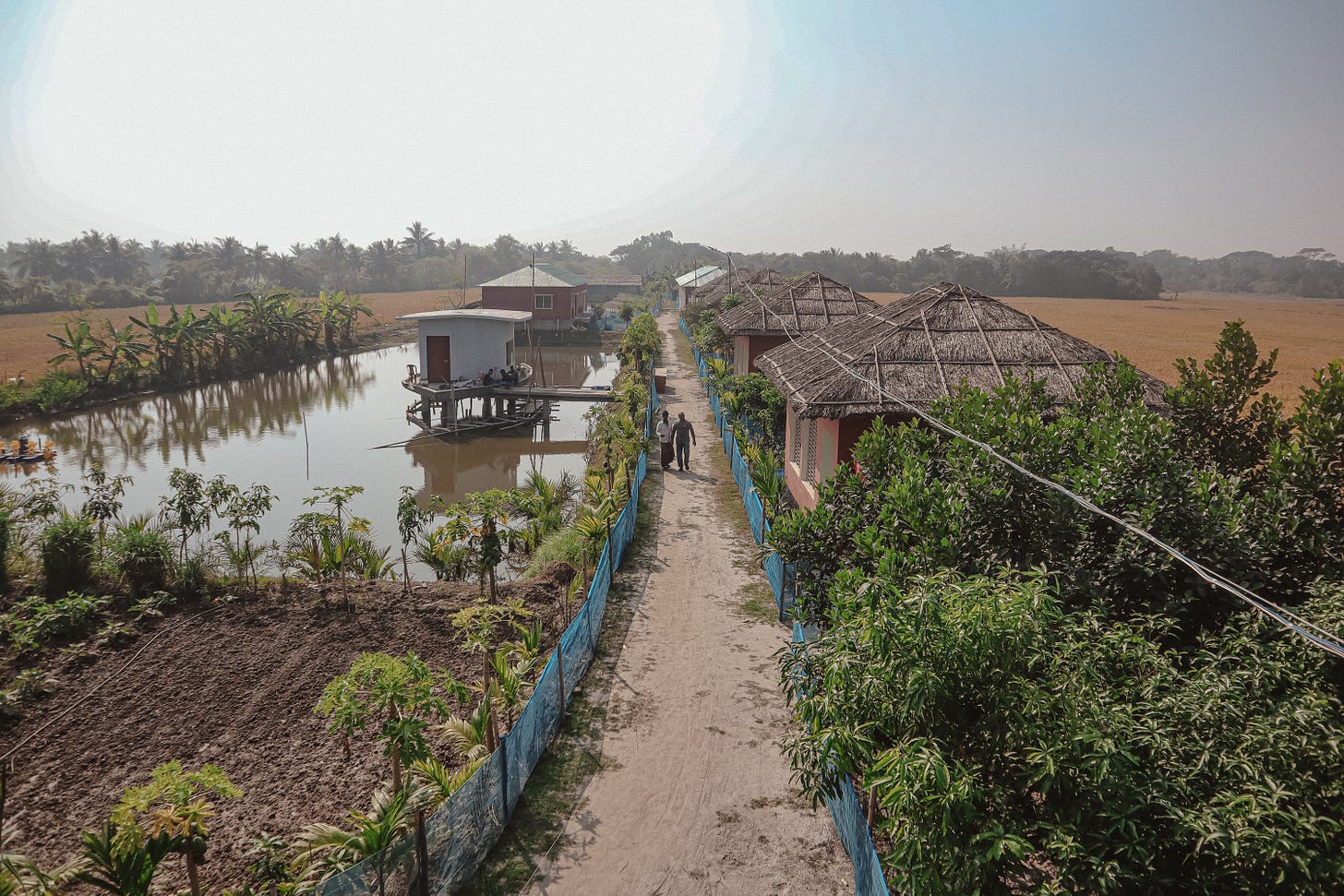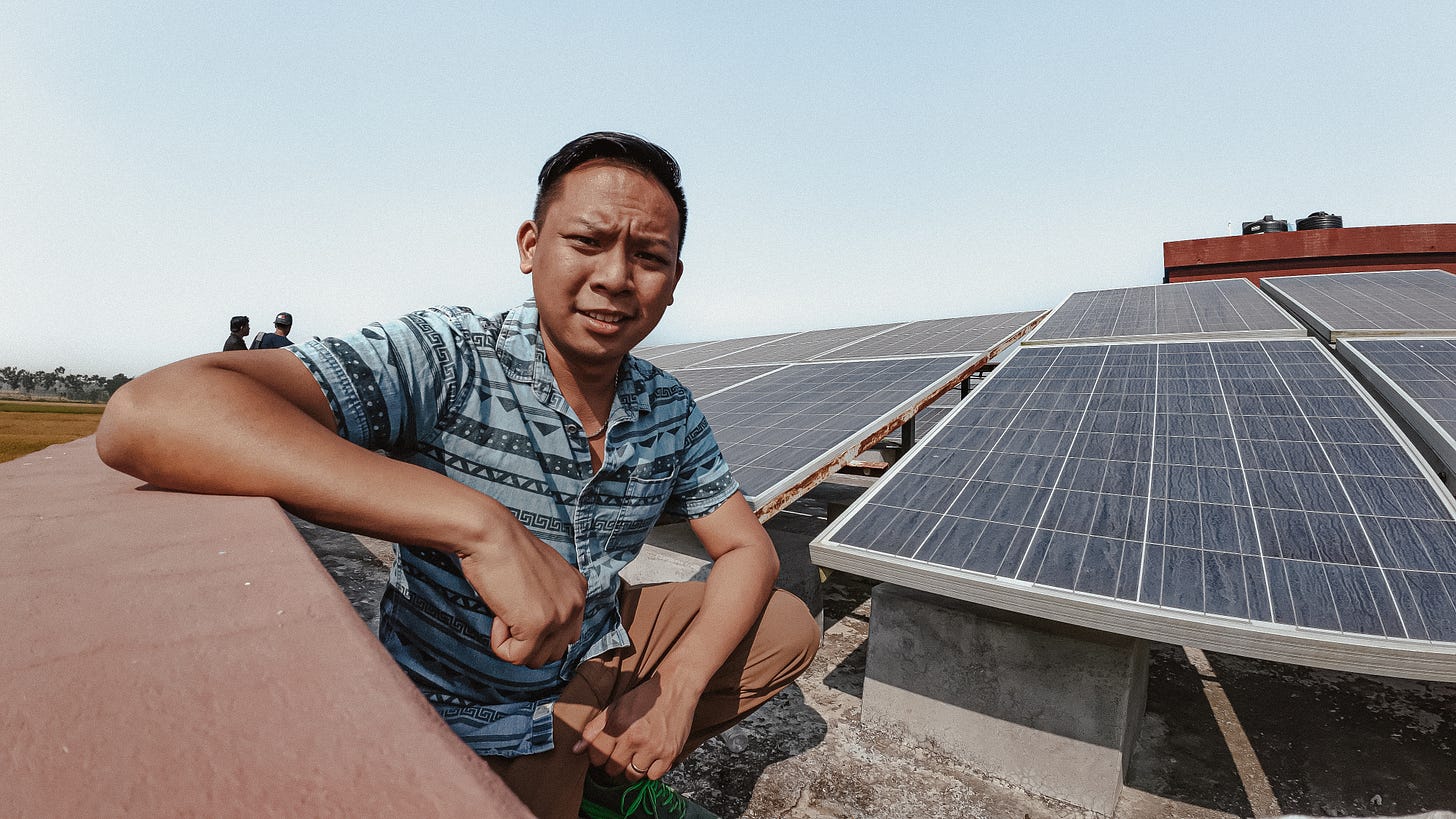One of the coolest places I got to visit when I was in Bangladesh was Banojibi.
This is an eco-village set up in the Sundarbans. It’s a place where people can learn climate adaptation techniques, and harness skills in sustainable farming. You’ll find guest houses where tourists can stay and get an in depth look at what makes the Sundarbans unique.
You’ll find hydroponic training centers, acres of farmland and fish ponds. Once members hone their sustainable farming skills, they’ll be able to share them with the surrounding communities.
This area is solar powered, there are Water ATMs where members can access clean water… you’ll find sites where people learn about weather and wildlife. And you’ll see storehouses where people are making products from the mangrove forests that they can sell. This enterprise helps them value the protection of their forest while providing an income.
Bangladesh is an interesting country as far as climate is concerned. It holds unfortunate claims like Dhaka being the world’s most densely packed city, and one of the most polluted cities in the world. It’s impossible to make a list of the most climate vulnerable countries in the world without including Bangladesh, its tendency to sink underwater, and the threat of intensifying cyclones on its coast.
However, it’s also a hub of climate resilience. This is where I’ve seen some of the coolest grassroots projects designed to bolster a community’s ability to withstand storms and disasters.
Banojibi means “those who rely on the forest.” Most people in the Sundarbans have historically relied on farming for survival. Banojibi features farming education and training areas for more sustainable approaches to agriculture.
Natural disasters due to climate change are increasingly severe in the Sundarbans. Forming weather clubs can help put locals in charge of their own disaster risk reduction.
Water scarcity is widespread on the coast of Bangladesh and many families still lack access to safe drinking water. Water ATMs help to provide more efficient storage and water access. In coastal Bangladesh, there are still many villages where electricity is unavailable, so Banojibi is a hub of solar energy, providing these resources in a clean way.
The Sundarbans have incredible biodiversity but a number of its species are critically endangered. Building local knowledge on the importance of wildlife is a very important issue. Training people on products that can be sustainably made and sold from mangroves can help build economic sufficiency while encouraging locals to better protect the mangrove forest.
The people of Banojibi are not only focused on averting disaster, but also extending new opportunities that come attached to healtheir ecosystems. The Sundarbans’ ecotourism potential is strong. Visitors are able to stay in guest cottages in Banojibi, and the meals are incredible.
Three stacks.
One thing I’ve been thinking about quite a bit lately is what it looks like to have your creative expression shift around as you get older.
I’ve seen so many of the bands and artists I loved when I was younger enter a new stage as legacy artists. When I’m with creative peers, I take note of the median age of a room, and wonder at what age do people in this discipline typically peak? Step back?
I know I’ll always want to keep making stuff, but there’s a difference between being a Chevy Chase, who keeps trying to run the same things out there, and a Steve Martin, who keeps finding new ways to reinvent.
I’d like to thank André 3000 for yet another example of what that looks like. Good flutin’
What’s making me happy this week:
Happy to have seen The Archies on Netflix, an Indian film inspired pretty directly from the Archie Comics and all related properties. It’s a playful enough movie, but one that felt like a celebration of being young… I’ve long been a fan of the Completely Arbortrary podcast highlighting the unique stories of varying tree species, but I’m especially enjoying their mini-series about the trees in Hayao Miyazaki’s movies. Their exploration of Sakaki in Spirited Away reminded me of why I really appreciate that film… Also loved this article examining if Yurt Life might have a little something to do with Mongolia being the most socially connected country. Considering it also has one of the lowest population densities on Earth, that’s a pretty impressive feat!









